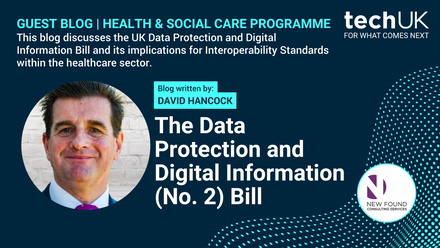How geospatial data is redefining participatory democracy
The climate crisis and COVID-19 have made it clear that we have to modernise the places we live and work, and the ways we get between them. Nearly every policy decision now has a spatial consideration, from how we reduce the environmental impact of our transport systems to how our cities adapt when more people are working from home.
Good community engagement is essential to successfully navigate these changes, and an increasingly important component of that is the intelligent use of geospatial data.
Historically, public engagement and consultation involving geographic data was clunky and dogged by manual processes. Opportunities for participation in decision-making were inaccessible - such as a planning notice stuck to a lamppost with a planning team’s contact details attached for those who wished to make an objection. Managing geospatial response data has been equally difficult; for example, a Call for Sites exercise, which forms part of a council’s Local Plan, often requires site owners to print out a paper map, draw said site in pen, scan the paper map and upload it as a PDF.
However, place-based participatory democracy is undergoing a digital transformation, which has been accelerated by the pandemic. It’s not been practical or safe to run town hall events, or display plans in public libraries so digital tools for displaying information and asking for opinions are being widely adopted by decision makers. On the other side, thanks to consumer technology like google maps, citizens are also now familiar with digital maps and happy to use these new tools.
As the technology has matured so has the data. Initiatives like Linked Identifiers are being used to connect geospatial datasets, creating new efficiencies and providing a world of insights - like understanding all the council departments that interact with a household, from social care to planning applications. The open data movement alongside the Public Sector Geospatial Agreement have increased availability of geospatial data for public servants who aren’t GIS experts. By properly integrating this data across a whole organisation, benefits are felt in both back-end processes and front-end, public facing services, like public engagement.
This transformation is reflected in the type of public engagement that organisations are running: councils are trying to understand more about specific locations rather than general ideas. Citizens are being asked contextual questions relating to the data on a map, and can respond in a way that actually generates geospatial data rather than purely qualitative (and therefore difficult to analyse/convert) opinion.
Delib’s new product, Citizen Space Geospatial, allows organisations to incorporate geospatial data throughout the engagement process. They can engage communities using interactive maps: displaying rich geospatial data to inform at the point of response. People can respond directly on the map, drawing a shape, a route, or dropping a pin, as well as submitting non-geospatial data. The data generated can be fully analysed, reported and integrated into an existing GIS, and responses can be displayed on an interactive map, increasing accountability.
Interacting with a map increases accessibility for the democratic process: it’s far easier and more ‘real’ to draw your daily bike commute on an interactive map than it is to describe it in words and street names. It’s far easier to understand which active planning applications are near your house on a map than in a dense PDF. The benefit is clear: if it’s easier to participate, more people will.
Making place-based decisions more open and transparent builds trust with the public and gives them more control over the decisions that affect them. In turn, this increases participation in democratic processes and generates more useful and diverse data to inform policy. Successful planning and policy decisions lead to better-functioning towns and cities, more appropriate commercial and residential forecasting and ultimately can stimulate economic growth.
For more information on how you can use geospatial data across your public engagement, please visit https://www.delib.net/citizen_space/geospatial

Laura Foster
Laura is techUK’s Associate Director for Technology and Innovation.








